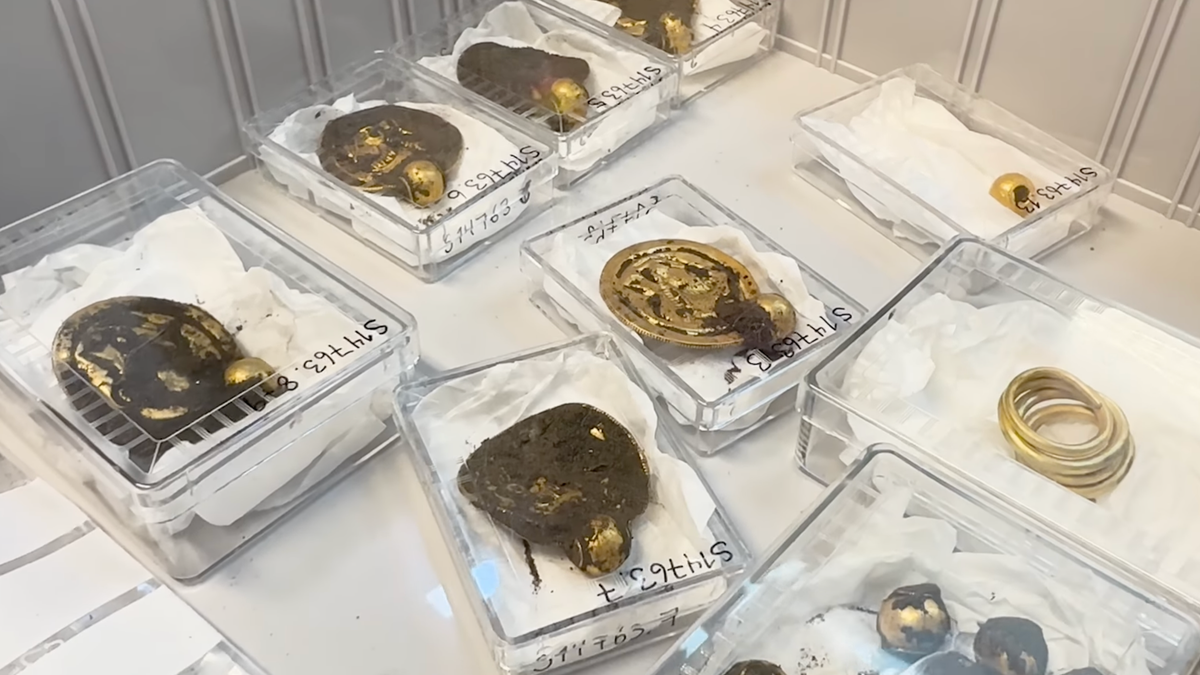
Norway’s “largest gold find of the century” was discovered by 51-year-old Erlend Bore, who bought a metal detector after his doctor told him to get more exercise. Bore unearthed nine gold pendants, three rings, and 10 gold pearls, on the southern island of Rennesøy last month.
Bore was reportedly planning to head home for the day when he said his metal detector started beeping on the hillside of a farmer’s property. “At first I thought it was chocolate coins or Captain Sabertooth coins,” Bore said in a press release issued by the University of Stavanger, referring to a fictional Norwegian pirate. “It was totally unreal.”
Advertisement
Bore contacted archeologists who continued the search for more gold. The combined treasure weighed in at just over 100 grams (3.5 ounces) and dated back to around 500 A.D., which is known as the Migration Period in Norway. The country’s Cultural Heritage Act states that any historical objects pre-dating 1537 and coins from before 1650 are considered to be state property, requiring the finder to turn them in.
Associate Professor Håkon Reiersen with the University of Stavanger’s Museum of Archaeology, which received the gold, described the gold pendants as bracteates which are thin, flat, single-sided gold medals, saying in the press release that the gold pearls and pendants were part of “a very showy necklace.” The necklace, he said, was worn by powerful individuals in society, adding that “in Norway, no similar discovery has been made since the 19th century, and it is also a very unusual discovery in a Scandinavian context.”
Advertisement
Advertisement
The museum posted a video of the archeological dig on Facebook and posted final photos of the gold on Twitter. Roughly 1,000 golden bracteates engraved with a horse motif have been recovered in Scandinavia thus far, but there haven’t been any similar discoveries made since the 19th century.
The migration period in Norway lasted from 400 A.D. to about 550 A.D., marking a time when migration was widespread in Europe. “Given the location of the discovery and what we know from other similar finds, this is probably a matter of either hidden valuables or an offering to the gods during dramatic times,” Reiersen said in the press release.
Although Bore was required to turn over the gold to the museum, he and the landowner will receive a reward for the find. The National Antiquities Authority, which determines the amount, has not yet assessed the finder’s salary.
Services Marketplace – Listings, Bookings & Reviews